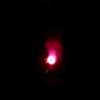Posted 14 January 2010 - 06:20 PM
Eric Hunkins had a interesting answer to the phenomena posted on Passfire.
Re: what makes whistle fuel whistle?
The short answer
Whistles whistle because of oscillatory burning which happens to be in the hearing range of humans.
The long answer
Whistle fuels are simply benzene rings with a metal hanging off it, such as potassium or sodium. The only fuel available for burning in the chemical is in the benzene ring itself. A lot of energy is required to break a benzene ring so it can release it's fuel, but when it is broken, it also releases lots of energy.
In the first phase of burning, the mass takes a lot of heat\energy to start breaking some benzene rings. The mass needs time to absorb the thermal energy created in the last phase to break more benzene rings to make more fuel. The oxidizer is giving off oxygen, but no fuel is available and the flame front becomes over oxidized and slows.
The second phase the mass has had time to absorb the energy from the previous phase and starts breaking benzene rings. The rings release a large amounts of carbon (fuel) and energy. With all of the new available fuel, the flame front grows exponentially setting off a sound wave.
This exponential burning, burns up all of the available fuel and the flame front returns to being over oxidized.
This on again off again burning happens somewhere between 10,000 and 20,000 times per second, which puts it in human hearing range.
Thermodynamics and construction of the fuel molecule are very important. With bigger molecules that have more fuel hanging off of them, the oscillatory burning is much less pronounced because there is more fuel available during the off cycle. They go into more of a straight burn. Metals like copper and aluminum have better thermodynamics than sodium or potassium. These compounds can absorb heat faster and the oscillation therefore is much faster, putting them out of the human hearing range.
Freud. Artists, in this view, are people who may avoid neurosis and perversion by sublimating their impulses in their work.













